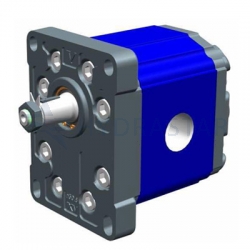Every lay person has a vague idea of what hydraulics is. However, if someone would ask you to explain the basics to a 10-year-old, how would you do it?

What Is Hydraulics?
Hydraulics describes the laws of liquid motion and equilibrium. Hydraulic engineers uses these laws to solve numerous engineering problems.
Hydraulics can also be explained as a mechanical function, which operates according to the force created by liquid pressure. The simplest example of mechanical hydraulic system dates back many centuries. The ancient Romans used hydraulic systems to put aqueducts into motion. Gravity created water pressure, which helped channel the water through pipes across long distances.
Today, we have much more complicated hydraulic systems, which use pumps to pressurise liquids.
Basic idea: Force applied at point A is transferred to point B via an incompressible liquid, becoming bigger in the process.
Piston Driven Hydraulic System
The piston-driven system is the most common one you will encounter in your everyday life. It includes a cylinder and a piston. There are numerous variations of this system. The pipe connecting the cylinders can be as long as needed. It can even fork to overcome obstacles.
In order to increase or decrease the force you want to receive at the end, you just need to change the size of cylinders and pistons relative to one another.
The simplest example of a piston-driven hydraulic system is a car break systems. You push the brake pedal and apply a rather small force of about 1 kg. The force is applied to the piston in the brake’s liquid-filled cylinder in such a way that brakes get over 1,000 kg of force at the end.
In contemporary vehicles, the brake system also uses a hydraulic pump, which needs a very slight force from a foot to start working and turn it into a formidable force to stop a vehicle. If you drive an older cars made in the mid-20th century, you’ll notice how hard you need to push the brake pedal to stop it.
Using Hydraulics In Everyday Life
A wide range of construction plant and industrial machinery use hydraulic systems. For example, diggers, excavators, bulldozers and the like use hydraulics to haul large weights with a slight pull of a lever.
Other ways of using hydraulics aren’t as obvious. For example, elevators use hydraulics to carry passengers up and down.
There are also hydraulic motors, which work like reverse pumps. Hydraulic gear motors receive fluid through the pipe. The liquid sends gears into rotation and then flows out of another pipe.
One of the gears connects to a motor shaft and produces power for whatever the motor is driving. The fluid continuously flows inside the motor, rotating the shaft for as long as needed.
Hydraulic motors are used instead of electric ones in order to save space. They are smaller than their electric counterparts and can be more energy efficient. Hydraulic motors are an excellent solution for situations when using electricity isn’t safe.
Our Free Guide To Hydraulic & Pneumatic Systems
At Hydrastar, we provide all types of spare parts for hydraulic and pneumatic systems. To learn more about hydraulics and pneumatics, please download our free e-book How To Minimise Downtime With Pneumatic Systems.


